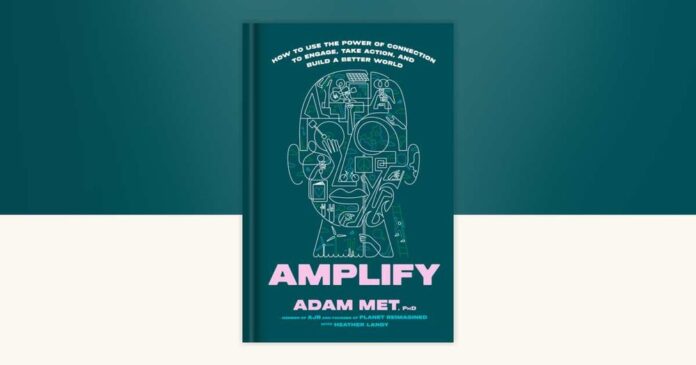Let’s discuss a new book titled, Amplify: How to Use the Power of Connection to Engage, Take Action, and Build a Better World by Adam Met, a climate activist who is also a bass player in the band AJR.
His thesis is that many of the tactics and strategies artists use to create loyal fanbases can be used to build momentum around social causes. For example:
-
Telling good stories. Met uses the example of the Tracy Chapman song, “Fast Car,” which is a complex story about family relationships, addiction, and economic struggle told in a simple way that resonates with just about everyone. The message was so universal that it was covered word-for-word by Luke Combs, a country artist with a very different audience than Chapman had when she wrote the song in the late 1980s. Nonetheless, his version became a #1 hit on the country charts.
-
Collective effervescence. At a good concert, we are all one. You feel part of the group because of the social bonding that occurs and the emotional rush you get from the experience. Social activists often try to unite us around how awful and hopeless everything is, but Met contends a better approach is to unify people around a positive, empowering message that makes them feel like part of a larger community of like-minded contributors.
-
Building from the bottom-up. AJR’s fan community sprung up completely organically. It wasn’t something they forced, and although they have nurtured it, they have never tried to control it. Met argues that the most successful movements build their own momentum this way. Recall the viral Ice Bucket Challenge. That started with one guy in New Jersey who was just trying to cheer up a friend of his who had ALS, but it went on to raise $220 million worldwide. The ALS Association has attempted to build on that with something called The CEO Soak, which has been going on for a while, but whose success has paled in comparison to its more organic predecessor.
In USA Today, Met argues that the language of climate activism in the US is all wrong. Rather than overwhelming us with doomsday scenarios, he argues activists should talk about the prosperity that green energy projects can promise. In lieu of the arcane language of net zero and carbon emissions, talk about “American made power” and “Next generation infrastructure.”
Similarly, the Civil Rights movement, arguably the most successful movement in American history, sprung up organically and was centered on message of positivity and hope.
There are implications for corporate marketers, as well. Brands like Slim Jim and Jeep have extremely strong brand communities that they support, but which really formed organically through a sense of shared interest and (in Jeep’s case) symbolism and ritual.
